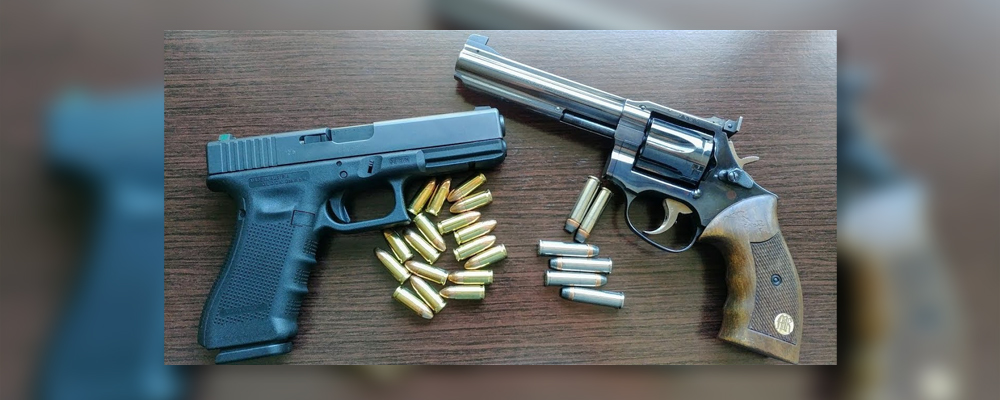The Advantage of Defense Ammunition vs. Target Ammunition For Self-Defense
Equally as important as choosing a firearm to conceal carry is choosing the ammunition that you will use in that firearm. Many people believe that ammunition selection is a simple process, but the reality is you should not use the first box you grab off the shelf. Instead, you need to use ammunition that was specifically intended for self-defense, and furthermore, you need to choose self-defense ammunition that is high performing and can stop an attacker in their tracks. You would be surprised at how many people actually carry target full metal jacket ammunition in their defensive pistol. While it may be significantly cheaper to do so, as defense ammunition is admittedly very expensive, it’s not a particularly wise move.
Why Is Target Ammo Not Good For Self-Defense?
The vast majority of ammunition you see on the shelves at sporting goods stores is full metal jacket ammunition, also known as target or range ammo. This ammunition is typically very affordable (at least with popular pistol calibers such as 9mm Luger or .38 Special) and is an excellent choice for training purposes or for casual shooting on the range.
But while target FMJ ammo should not be regarded as low quality (at least not from reputable ammo makers), there are many reasons why you would not be smart to use it for self-defense.
This is because FMJ ammunition does not expand upon impacting the target, because the bullet is typically a round nose or ball. This means two things:
- The round will create much less damage in comparison to an expanding bullet
- The round can easily pass through human flesh and cause collateral damage to innocent bystanders
For these reasons, target ammo isn’t just not as effective for self-defense, it can potentially be more dangerous to other people caught in the middle of the crossfire as well. Target ammo is a superb choice for training on the range. But it’s hardly a superb choice to depend your life on. Instead, you’re going to need to go with jacketed hollow point defense ammunition, which we will talk about next.
What Is Jacketed Hollow Point Defensive Ammunition?
Jacketed hollow points (JHP) are ammunition designed specifically for self-defense. Hollow points are far more effective for defense because not only are they designed to expand upon impact, they also are designed to transfer almost all of their energy into the target as well.
This means that if you shoot an attacker trying to kill you, the bullet will expand instantly to make a much larger wound channel than a full metal jacket round nose would. Furthermore, the bullet will not over penetrate because most of the energy will have already been transferred upon impact.
That being said, not every jacketed hollow point bullet will be a suitable choice for self-defense. There are several qualities that you will need to look for in a suitable defensive round, including…
Qualities Your JHP Defensive Ammunition Needs To Have
There are many qualities that any ammunition you use for personal defense needs to have, including but not necessarily limited to the following:
- It needs to penetrate the target deep enough that it can stop the attacker (FBI standards are a minimum of twelve inches of penetration while continuing to expand)
- It must expand reliably in order to create enough damage to stop the attacker
- It needs to be fully functional and reliable in your firearm, and work under adverse conditions (such as freezing temperatures, rain and snow, hot weather, etc.)
Remember, the reason you want to use jacketed hollow point ammo to begin with is because you want the bullet to expand continuously while transferring as much energy as possible into the attacker. This will create the most stopping power while also limiting liabilities that would be created from over penetration and potentially causing collateral damage.
According to the FBI, the best defense ammunition will penetrate a minimum of twelve inches while continuing to expand until it stops. While velocity plays a major role in how far a bullet will travel, heavier bullets will also penetrate just as well as lighter rounds, while also conserving more inertia (which should technically make it penetrate even farther).
You also need to confirm that your defensive ammo in choice will function properly in your defensive firearm as well. Even though defensive JHP ammunition tends to be very expensive, it is of the utmost importance that you know it will function correctly in your handgun. For this reason, run a minimum of two hundred rounds of the ammunition through your pistol. If there are any hiccups at all, you will need to find a different round.
Jacketed Hollow Point vs. Hollow Point
Many people are under the impression that jacketed hollow point (JHP) and hollow point (HP) ammunition is the same thing, but hit is not true. Jacketed hollow points will look very similar to hollow points, but they will also be coated in a more durable and smoother metal, which will prevent lead issues in your firearm while also improving feeding and reliability. If you shoot a good amount of normal HP ammunition through your firearm, lead can build up in the weapon that will result in fouling and increased wear and tear. JHP ammunition is just as effective while also being more reliable.
Conclusion
In conclusion, JHP defense ammunition will be far more effective than target FMJ ammo for self-defense, because it will expand upon impact and transfer more energy into the attacker in order to create a larger wound channel and increase the chances of stopping them in their tracks. Additionally, jacketed hollow point ammunition will also penetrate less than range ammo, so the chances of them passing through an attacker and possibly hitting an innocent bystander is also reduced. Target ammo is great for range practice, and that’s about it. When you need to protect your life and the lives of your family, jacketed hollow point ammo is easily the best way to go.




